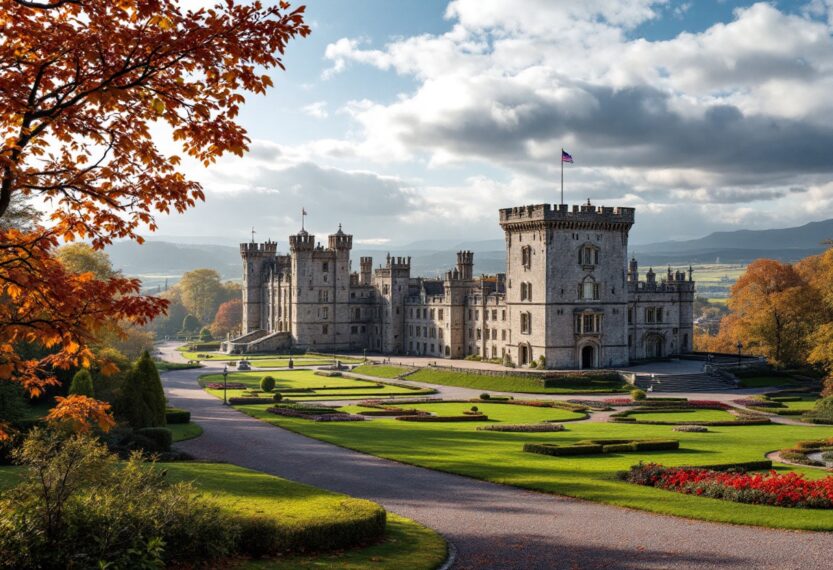Balmoral Castle: A royal legacy of tradition and transformation
Nestled in the picturesque Scottish Highlands, Balmoral Castle stands as a testament to the enduring legacy of the British royal family. For over 150 years, this majestic residence has served as a summer retreat for the Windsors, a place where family bonds are strengthened amidst the serene beauty of nature. The castle, completed in 1856 under the watchful eye of Queen Victoria and Prince Albert, has witnessed countless family gatherings, making it a cherished symbol of royal tradition.
The Balmoral experience: A blend of history and hospitality
This July marked a significant moment in the castle’s history, as it opened its doors to the public for the first time since its completion. Over two weeks, more than 1,300 guests were welcomed into the castle, allowing them to experience the rich tapestry of royal life. Queen Elizabeth II, who passed away in the castle in 2022, regarded Balmoral as her favorite escape, a sentiment echoed by many who have visited its storied halls.
However, the castle’s interiors have long been a subject of debate. While the decor reflects the Victorian era’s opulence, it has often been described as quirky and homely. Even the current visitor enterprise manager acknowledged its unique charm, suggesting that the decor, steeped in ancient plaids, may not resonate with modern tastes. Historical accounts reveal that early guests, including the 5th Earl of Rosebery, found the interiors less than appealing, with some rooms described as the ‘ugliest’ they had ever seen.
The evolution of Balmoral’s decor
Queen Victoria’s vision for Balmoral was clear: to create a home that reflected her and Prince Albert’s tastes. The couple introduced distinctive plaid patterns throughout the castle, from carpets to curtains, creating a vibrant yet controversial aesthetic. Critics of this style, often referred to as ‘Balmorality,’ argued that the tartan motifs were overdone. Journalist Ivor Brown noted that the castle was ‘be-tartaned from the linoleum to the roofs of the rooms,’ a sentiment that resonates with many who view the decor as a relic of a bygone era.
Despite the mixed reviews, the introduction of mechanized weaving in Scotland popularized tartan, and Queen Victoria was not alone in her affection for this fabric. Her descendants, including Queen Elizabeth II, embraced the Balmoral Tartan, a striking blend of black, red, and lavender on a grey backdrop, during their summer sojourns.
A modern touch: King Charles III’s vision
As the royal family continues to evolve, so too does Balmoral. Following the passing of Queen Elizabeth II, King Charles III has taken steps to modernize the castle while respecting its historical significance. During a meeting with then-Prime Minister Liz Truss, the drawing room showcased a more subdued color palette, moving away from the vibrant tartans of the past. This shift reflects a broader trend within the royal family to balance tradition with contemporary sensibilities.
In a nod to the castle’s heritage, King Charles III has reinstated the green-and-red Hunting Stewart tartan carpet, restoring a sense of continuity with the past. As Balmoral Castle opens its doors to a new generation of visitors, it remains a symbol of royal history, a place where the past and present intertwine, inviting all to explore its unique charm.

